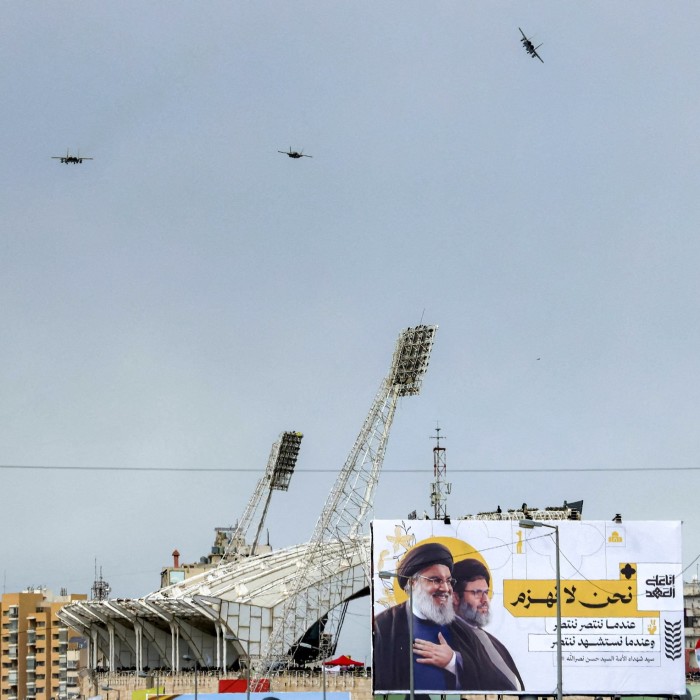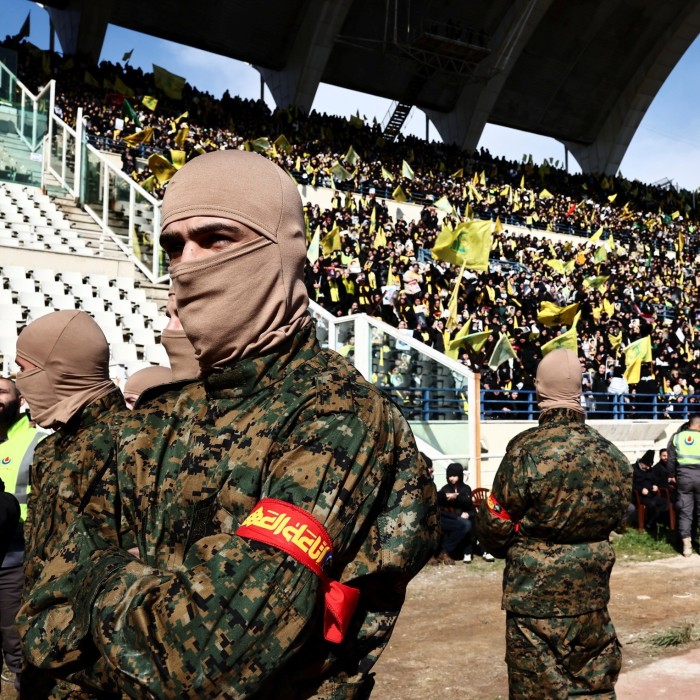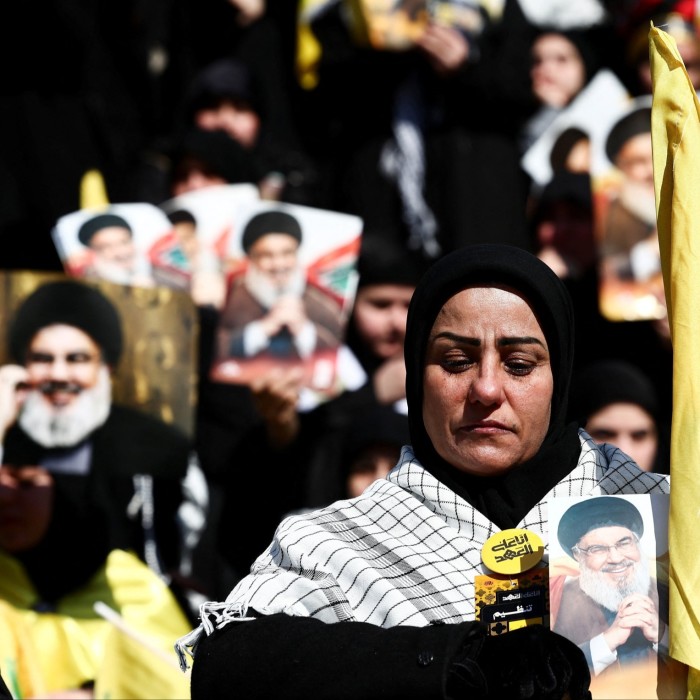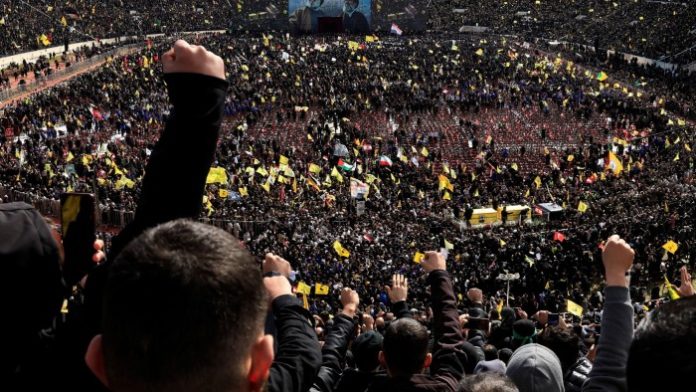Hassan Nasrallah, the veteran Hizbollah leader who was killed in an Israeli air strike five months ago, was buried on Sunday after a ceremony in Beirut attended by huge crowds of supporters.
Clutching pictures of Nasrallah and draped in the yellow flags of the militant group, supporters from Lebanon and beyond filled the 55,000-seat Camille Chamoun Sports City stadium, with many more spilling into the streets outside. The funeral was intended as a show of force for a movement that has been battered in its war with Israel.
Many wept as the coffins of Nasrallah and his successor Hashem Safieddine, who ran Hizbollah for just a week before he was also assassinated by Israel, were paraded through the stadium. Some tossed flowers, while others threw small objects on to the coffins in the hope they would be blessed by the contact.
Nasrallah, 64, was killed along with other senior figures in Hizbollah on September 27, when Israel’s air force dropped dozens of bombs on one of the group’s command posts in the Beirut suburb of Dahiyeh.

As the procession continued on Sunday afternoon, a triangular formation of Israeli F15 and F35 jets flew low over the capital, causing panic and rage below. One woman, her face streaked with tears, clutched her young son and looked up in fear.
The stadium erupted with shouts of defiance, with the funeral host declaring that the sound of the planes would not intimidate anyone. “The roar of our call is greater than all of your sounds,” he said, leading the crowd in a chant: “At your service, O Nasrallah. Death to Israel.”
Nasrallah’s killing marked a stunning blow just days after Israel escalated its campaign against the Iran-backed group into a full-blown war, which devastated its leadership and diminished its weapons stockpile.
The killing also highlighted how deeply Israel’s intelligence networks had penetrated a group whose internal discipline had always been praised.
The war had been triggered when Hizbollah began firing rockets towards Israel on October 8, 2023 “in solidarity” with Gaza, following Hamas’ deadly October 7 assault.
At least 4,000 people were killed in Lebanon — many presumed to be Hizbollah fighters — as Israeli missiles rained down on areas from which the group draws its support.
In his 32 years at the helm, Nasrallah transformed the Shia group into the pre-eminent force in Iran’s regional network of proxies dubbed the axis of resistance.
Until his death, he was revered not just at home but throughout the Arab and Muslim worlds for his defence of the Palestinians and his challenge to Israel.
Many of his supporters on Sunday were still grappling with his death.
“Some of us who came here, came with some hope that we’re going to find [Nasrallah] alive, that he’ll come out and put our minds at ease,” said 21-year-old Ali. “But, when the coffin passed by, we realised we had lost all sense of security.”
“We realised that this country, this region, was dependent on a specific person, and we lost him,” Ali added. “There is nothing that can describe the feeling. It’s like we lost our father. Everyone here has lost their father.”
Hadi, an Iraqi writer, said he had flown from Baghdad with a delegation of seven. “Nasrallah is not just a martyr for Lebanon, not just for the Shia, but for all of Islam.”
Staunch Hizbollah ally and speaker of Lebanon’s parliament Nabih Berri attended, alongside Iran’s foreign minister Abbas Araghchi and speaker of parliament Mohammad-Baqer Ghalibaf, as well as religious, political and militia leaders from Iraq, Pakistan and Yemen.


Israeli troops remain in five hilltop positions in southern Lebanon, despite a ceasefire deal signed by both countries, which mandated a full withdrawal of Israeli forces by mid-February. Its air force has also continued to conduct air strikes on what it says are Hizbollah positions, including striking targets on Sunday morning.
The militant group suffered a further blow when its ally Bashar al-Assad was deposed in Syria last December, severing a vital supply route.
The group’s diminished stature is also reflected in Lebanon’s postwar politics. For the first time since the end of the country’s 15-year civil war in 1990, the cabinet’s manifesto did not include language that legitimises Hizbollah’s continued arsenal.
Neither Lebanon’s president nor premier attended on Sunday.
In an attempt to boost morale, an address broadcast on the stadium’s screens from an undisclosed location showed Hizbollah’s leader Naim Qassem reassuring the crowds that the group remained “strong”.
“We will not submit and not accept the continuation of our killing and occupation as we watch,” Qassem said.
The crowds began to thin as he spoke.




